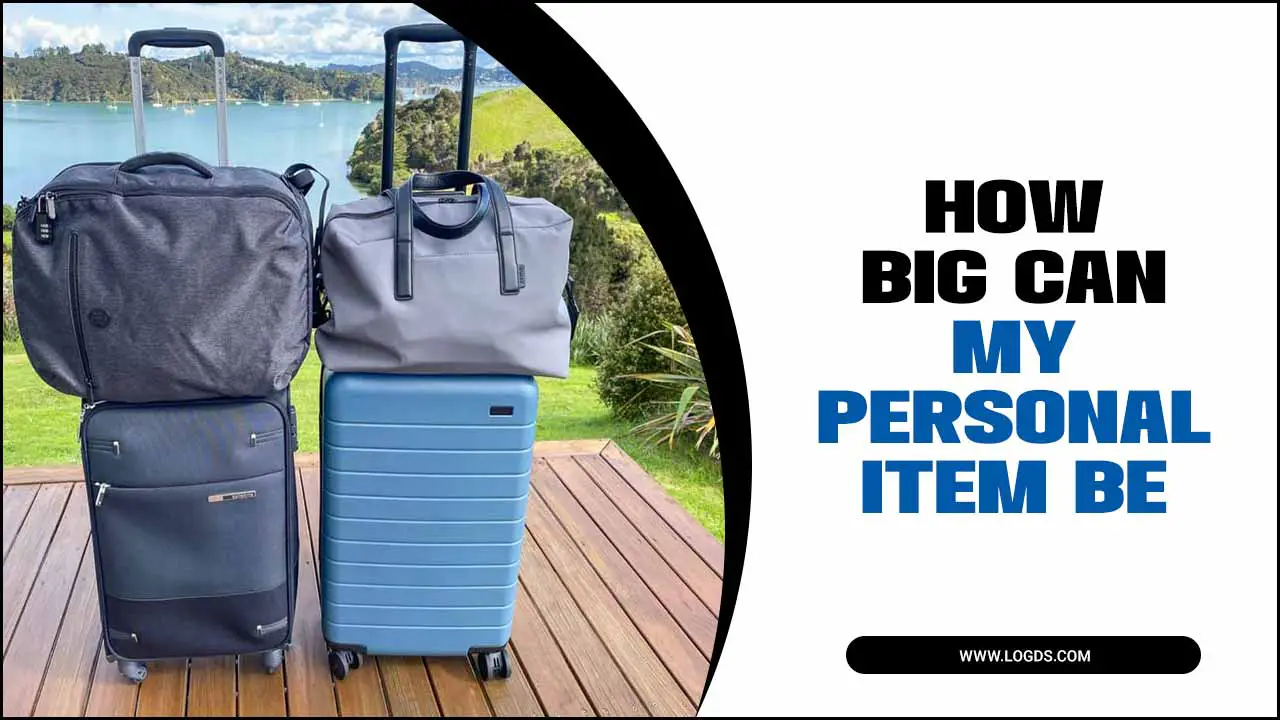The best time to visit Algeria to avoid crowds is during the shoulder seasons: spring (April-May) and fall (September-October). During these months, the weather is pleasant for exploring, and you’ll encounter fewer tourists, offering a more authentic experience.
Planning a trip to a captivating country like Algeria can feel a bit overwhelming, especially when you dream of exploring without battling large crowds. You want to see the ancient ruins, experience vibrant souks, and marvel at diverse landscapes without feeling rushed. It’s completely understandable to want that perfect balance of good weather and fewer people.
Well, you’ve come to the right place! We’re going to break down exactly when you should plan your Algerian adventure to ensure comfort, ease, and plenty of elbow room. Get ready to discover how to make your journey stress-free and truly memorable.
Why Timing Your Visit to Algeria Matters for a Crowd-Free Experience
Choosing the right season to visit Algeria can make a world of difference. Imagine strolling through the Roman ruins of Timgad or exploring the bustling medina of Algiers with a sense of calm and space. This isn’t just about avoiding long lines; it’s about immersing yourself more deeply in the culture and natural beauty without distraction.
Peak tourist seasons often mean higher prices for flights and accommodation, more crowded attractions, and a generally more frenetic atmosphere. For many travelers, especially those looking for a more authentic and relaxed experience, these elements can detract from the magic of a destination. By understanding Algeria’s climate and its most popular visitor times, you can strategically plan your trip to maximize enjoyment and minimize hassle.
Moreover, thinking about crowd-free travel also ties into comfort and personal space, which are crucial for a truly enjoyable trip. Whether you’re traveling solo, as a couple, or with family, having the flexibility to explore at your own pace is invaluable. This guide will help you pinpoint those sweet spots in the calendar.
Understanding Algeria’s Climate: What to Expect
Algeria boasts a diverse climate, largely influenced by its vast geography, which ranges from the Mediterranean coast to the immense Sahara Desert. Knowing these variations is key to picking the most comfortable time for your visit.
Coastal Regions (Algiers, Oran, Annaba)
The northern coastal areas enjoy a Mediterranean climate. This means:
- Summers (June-August): Hot and dry, with temperatures often soaring. Think sunshine, but also potentially very high heat, especially in July and August. This is a popular time for beachgoers but can be uncomfortably hot for extensive sightseeing.
- Winters (December-February): Mild and wet, with occasional rain and cooler temperatures. Snow is rare on the coast but can occur in the nearby mountains. It’s a quieter time to visit, but outdoor activities might be limited by weather.
- Spring (March-May): Pleasant and mild, with blooming landscapes. As the weather warms up, it becomes ideal for exploring cities and coastal towns.
- Autumn (September-November): Warm and stable, transitioning from summer’s heat to winter’s coolness. This period offers beautiful clear days, perfect for exploration.
Inland and Desert Regions (Sahara)
The vast Sahara Desert has a starkly different climate:
- Summers (June-August): Extremely hot, with daytime temperatures regularly exceeding 40°C (104°F) and even touching 50°C (122°F). This is generally too hot for any comfortable exploration, especially for those not accustomed to desert heat.
- Winters (December-February): Mild and very pleasant during the day, often sunny and around 20°C (68°F). However, desert nights can get surprisingly cold, dropping to near freezing. This is the prime time for desert excursions.
- Spring (March-May): Temperatures begin to rise significantly, becoming very hot by May. Early spring is still manageable, but late spring can be challenging.
- Autumn (September-November): Temperatures start to cool from the summer highs, making it comfortable again. September can still be quite warm, but October and November offer excellent conditions for desert travel.
The Sweet Spot: Best Months for Crowd-Free Exploration
Based on climate and typical tourist patterns, certain months stand out as ideal for experiencing Algeria without the crowds. These are your prime invasion times if you’re seeking tranquility.
Spring: April and May
Spring is a fantastic time across much of Algeria.
- Coastal Areas: The weather is beautifully mild and sunny, perfect for wandering through historical sites like the Casbah of Algiers or enjoying the coastal cities. Wildflowers are in bloom, adding a scenic charm.
- Desert Areas: Early spring, particularly April, offers comfortable daytime temperatures in the Sahara, making desert trekking and stargazing very enjoyable before the intense summer heat sets in.
- Crowd Levels: While not completely empty, these months are well before the main European summer holiday rush. You’ll find fewer international tourists, making for a more relaxed experience.
Autumn: September and October
As the summer heat subsides, autumn unveils another perfect window.
- Coastal Areas: The weather remains warm but is far more pleasant than the peak summer heat. Sea temperatures are still inviting for a dip.
- Desert Areas: October is arguably the best month for the Sahara. Daytime temperatures are ideal for exploring, and the nights are cool but not yet bitterly cold. It’s perfect for camel treks and overnight stays in a desert camp.
- Crowd Levels: Similar to spring, these shoulder months see significantly lower numbers of tourists compared to July and August. You can explore major sites and popular regions with relative ease.
When to Potentially Avoid for Fewer Crowds
To truly escape the masses, it’s helpful to know which periods tend to be busiest, or conversely, offer fewer crowds but with weather considerations.
Peak Summer: July and August
These are Algeria’s hottest months, particularly inland and in the Sahara. While popular with some European tourists seeking beach holidays along the coast, the extreme heat makes extensive sightseeing and desert exploration challenging and uncomfortable for many. This can mean fewer crowds for historical and desert tours but busier coastal resorts.
Winter: December and January
While generally mild on the coast, winter can bring rain, making it less ideal for those seeking sunshine-filled adventures. The Sahara sees its coldest temperatures (though still pleasant during the day). These months are generally less popular with international tourists, offering a quieter experience. However, if your priority is warm weather for extensive outdoor activity, winter might not align perfectly with your expectations.
A Table: Algeria – Best Times to Visit for Crowd-Free Travel
Here’s a quick visual guide to help you pinpoint your ideal travel window:
| Season | Months | Crowd Levels | Weather Suitability | Notes |
|---|---|---|---|---|
| Spring | April – May | Low to Moderate | Excellent (Mild/Warm) | Ideal for touring cities, ruins, and early desert visits. Blooming landscapes. |
| Summer | June – August | Moderate (Coast) / Low (Inland due to heat) | Very Hot (Inland/Desert) / Hot (Coast) | Best for coastal resorts. Inland/desert travel can be extreme. |
| Autumn | September – October | Low to Moderate | Excellent (Warm) | Prime time for desert exploration. Pleasant for all regions. |
| Winter | November – March | Low | Cool/Mild (Coast) / Cold Nights (Desert) | Quieter. Good for exploring cities if you don’t mind cooler weather and potential rain. Desert days are pleasant, but nights are chilly. |
Beyond the Calendar: Understanding Local Holidays
While focusing on the weather and general tourist seasons is helpful, be aware of local holidays and events. These can significantly impact crowd levels and the availability of services.
- Religious Holidays: Islamic holidays, such as Eid al-Fitr and Eid al-Adha, as well as Ramadan, follow the lunar calendar and thus change each year. During Ramadan, many things operate on a reduced schedule, and eating or drinking in public during fasting hours is discouraged. While it can be a unique cultural experience, it’s not ideal for first-time visitors seeking extensive sightseeing. Eid periods can be very busy with local travel and celebrations.
- National Holidays: Algeria celebrates its National Day on November 1st. While not a major tourist event, it’s worth noting.
It’s always a good practice to check the specific dates for these holidays for the year you plan to travel and see how they might affect your itinerary. A quick search for “Algeria public holidays [year]” will provide this information.
Tips for a Truly Crowd-Free Experience
Even during the shoulder seasons, some popular spots might see more visitors. Here’s how to maximize your chances of having places to yourself:
- Visit Early or Late in the Day: For popular attractions like the Roman ruins of Djemila or the M’Zab Valley, arriving right at opening time or an hour before closing can mean having the place almost entirely to yourself.
- Explore Off-the-Beaten-Path Destinations: While Algiers and Oran are vibrant, consider venturing to less-visited regions. Places like Constantine, with its stunning bridges, or lesser-known Saharan oases can offer incredible experiences with fewer fellow tourists. The UNESCO World Heritage sites outside the main draws are often blissfully quiet.
- Be Flexible with Your Itinerary: If a particular site is unexpectedly busy on your planned day, have a backup plan. Perhaps explore a nearby museum or enjoy a leisurely coffee in a local café, returning to the site later or the next day.
- Consider Weekdays: Visiting major sites on weekdays rather than weekends usually results in fewer crowds, especially if those sites are popular with locals.
- Embrace the Desert at Night: While daytime desert tours can attract groups, overnight stays in a desert camp under the stars offer a profound sense of solitude and peace. The vastness of the Sahara is most felt when it’s quiet and dark.
Packing Essentials for Comfort in Any Season
Regardless of when you visit, comfortable travel is key, especially if you’re managing personal care needs. For any trip, especially to a country with varying climates like Algeria, smart packing makes all the difference.
For All Seasons:
- Lightweight, Breathable Clothing: Essential for staying comfortable, whether it’s warm on the coast or significantly hot inland.
- Comfortable Walking Shoes: You’ll be doing a lot of exploring, from ancient ruins to bustling medinas.
- Sun Protection: A wide-brimmed hat, sunglasses, and high-SPF sunscreen are crucial.
- A Light Scarf or Shawl: Versatile for sun protection, warmth in cooler evenings, and for modest dress when visiting religious sites or more traditional areas.
Seasonal Additions:
- Spring/Autumn: A light jacket or sweater for cooler evenings or breezy coastal days.
- Summer: Lighter fabrics, loose-fitting clothing, and extra water bottles.
- Winter: A warmer jacket, a sweater, and perhaps waterproofs for the coastal regions.
Personal Comforts for Stress-Free Travel:
For those who value extra comfort and peace of mind, having discreet personal care items can be a lifesaver. Packing advanced adult or child diapers can ease concerns about restroom availability, long journeys, or unexpected situations. Brands like Depend offer discreet, absorbent products designed for comfort and security, ensuring you can focus on enjoying your Algerian adventure.
Having these essentials packed ensures you’re prepared for any situation, allowing you to relax and immerse yourself in the incredible experiences Algeria has to offer. Remember, comfortable travel is happy travel.
Algeria’s Must-See Crowd-Free Gems
While you might aim to avoid crowds, some sites are simply unmissable. Here are a few that are particularly rewarding to visit during the quieter months:
The Sahara Desert
Exploring the immense beauty of the Sahara is a quintessential Algerian experience. Opt for an overnight trip from towns like Djanet or Tamanrasset. The cooler temperatures of October or early November are perfect for camel treks, visiting ancient rock art sites, and sleeping under a sky full of stars in a traditional Berber camp.
The Roman Ruins of Timgad and Djemila
These UNESCO World Heritage sites are incredibly well-preserved. Visiting them in the spring or fall means you can explore these vast ancient cities without the intense heat of summer and with far fewer people. Imagine walking the same streets as Roman legionaries with only the whisper of the wind for company.
The Casbah of Algiers
A UNESCO World Heritage site, the Casbah is a maze of narrow streets, bustling souks, and historic buildings. While it’s always alive with local activity, visiting during the shoulder seasons allows for a more relaxed exploration of its winding alleys, discovering hidden squares and enjoying its unique atmosphere without being overwhelmed.
Constantine
Known as the “City of Bridges,” Constantine is perched dramatically on a rocky outcrop above a deep gorge. Its stunning suspension bridges, Roman ruins (like the Antiquarium), and the beautiful Old Town offer a unique perspective. Spring and autumn provide the best weather for enjoying its vistas and exploring its historical depth.
Conclusion
Algeria is a land of breathtaking diversity, from the azure waters of the Mediterranean coast to the boundless horizons of the Sahara Desert. Planning your visit during the ideal shoulder seasons – specifically April-May and September-October – is your golden ticket to experiencing its wonders without the hustle of peak tourist seasons.
By understanding Algeria’s climate and following these tips for crowd-free exploration, you can ensure a journey filled with comfort, authenticity, and unforgettable moments. Whether you’re navigating the ancient streets of a Roman city, sipping mint tea in a bustling souk, or gazing at a canopy of stars in the desert, your journey will be enriched by a sense of peace and personal space.
So, pack your bags with confidence, embrace the adventure, and get ready to discover the magic of Algeria at your own pace. Your essential, crowd-free Algerian adventure awaits!
Frequently Asked Questions
What is the absolute best month to visit Algeria to avoid crowds?
The absolute best months are typically late September to mid-October. This period offers excellent weather across most of the country, including very pleasant conditions in the Sahara, and falls outside of major holiday periods for both local and international tourists.
Is it possible to visit Algeria and not encounter any tourists at all?
While you can certainly visit during very quiet times and go to less famous locations to significantly minimize encounters, it’s almost impossible to guarantee seeing no other tourists, especially in popular areas or during local festivals.
What kind of weather can I expect in Algeria during April and May?
In April and May, coastal regions usually enjoy mild to warm temperatures with plenty of sunshine, making them ideal for sightseeing. Inland and desert areas are also warm but beginning to heat up; early April is still quite pleasant for desert trips.
Are there any major festivals in Algeria that I should be aware of if I want to avoid crowds?
Yes, Islamic holidays like Ramadan, Eid al-Fitr, and Eid al-Adha can make travel busier and affect operating hours. Always check the dates for these lunar-calendar-dependent holidays as they shift annually.
Is it too hot to visit the Sahara Desert in May?
May marks the beginning of intense heat in the Sahara. While early May might still be manageable, late May can see temperatures soaring well over 40°C (104°F), making daytime exploration challenging and uncomfortable for most visitors. It’s generally better to visit the Sahara in October, November, February, or March.
What are some less-visited regions in Algeria that offer a crowd-free experience?
Regions like the Aurès Mountains, the town of Ghardaïa in the M’Zab Valley (while a UNESCO site, it can be quieter than coastal cities), or exploring smaller towns and villages away from the major tourist routes can offer more secluded experiences.
How does visiting Algeria during Ramadan affect the travel experience?
During Ramadan, many businesses operate on reduced hours, and it’s respectful to avoid eating, drinking, or smoking in public during fasting hours. While it offers a unique insight into local culture, it’s not ideal for those who want to maximize sightseeing and easily access services.




